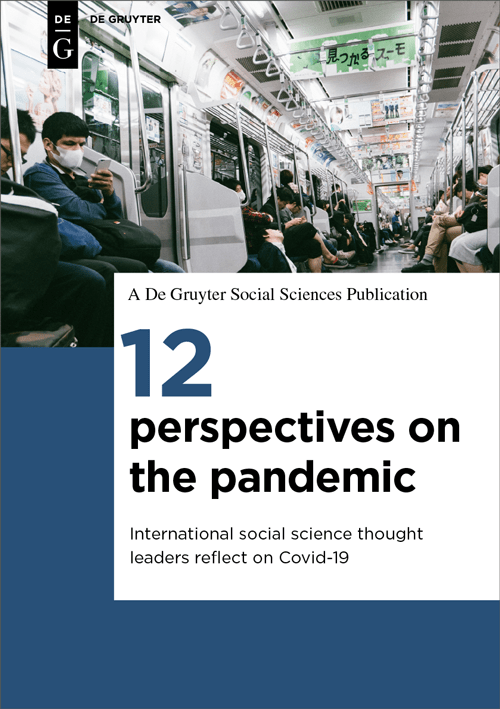Is Covid-19 Part of History’s Eternal Danse Macabre?
From the plagues in Egypt to the Black Death, the Spanish flu and now Covid-19, the trail of human misery left by diseases and disasters has been intense. For a social scientist, what do these events mean for society and its future?
This essay was first published in the free digital pamphlet 12 Perspectives on
the Pandemic: International Social Science Thought Leaders Reflect on Covid-19.
Plagues have been the persistent companions of human communities for the entire history of homo erectus. Perhaps it is unsurprising, therefore, that together with natural disasters, they have evoked religious responses to calamity that bring into question the meaning of life and its injustice.
Plagues and Disaster
In medieval times, the Wheel of Fortune symbolized the precarious nature of human existence. The angel of death was one of the four horsemen of the apocalypse. We have graphic accounts of 10 plagues in Exodus. The most troublesome was the death of the first born in Exodus 11:4 – 6. This plague engulfed Egypt in response to the Pharaoh’s unwise boast that he knew nothing of Yahweh.
The most demanding challenge to human notions about justice came with the Black Death in 1342 which killed an estimated 200 million. One response to this plague was the Dance Macabre which portrayed death as a sinister presence sitting on the backs of his victims. A familiar children’s nursery rhyme — Ring a Ring o’ Roses — allegedly describes the symptoms that attended the victims, such as boils under
armpits and groins.
In modern history, the Spanish flu of 1918 killed up to 100 million people on the back of 20 million military and civilian casualties from the Second World War.
What do these plagues and disasters have in common apart from the dry statistics? As a sociologist, two outcomes strike me as worthy of consideration.
Defining A Generation
My first observation is that we have detailed information about the distribution of fatalities by social class. In general terms, the poor and the disprivileged suffer disproportionality. However, of more interest is how catastrophic pandemics and crises came to define whole generations. By ‘generation’, I mean a cohort whose collective memory and sense of identity is defined by a shared event that changed their world.
In modern history, we have the generation of the Great Depression, the ‘disobedient generation’ of the 1960s, and the generation of 9/11. What will characterize the mentality
and imagination of the Covid-19 generation?
My second observation is that while the statistics of infections, recoveries and deaths are clearly important as scientific facts guiding social policy, people want more than statistics when the scale of the crisis calls out for a moral or religious response. Why me? Why us? Why now?
Answers to such questions are called theodicies — beliefs or ideologies that seek to explain the meaning of injustice and suffering.
Gottfried Leibniz (1646 –1716) developed the idea of theodicy in response to the puzzle created by the idea of a loving, kind and just creator in the context of the devastating Lombardy floods in 1710. He proposed an optimistic solution: ‘We live in the best of all possible worlds created by God’, but his optimism was lampooned by Voltaire in ‘Candide’ (1759). The problem of theodicy was raised critically by the Lisbon earthquake of 1755 on All Saints’ Day, destroying Lisbon and killing up to 100 thousand inhabitants.
Catholic theologians saw it as a punishment of sinners. Rationalists were not convinced, but the problem of meaning would not go away. We now have ample statistical evidence regarding the spread and impact of Covid-19 in developed societies.
Statistical modelling will offer various projections. However, statistics are unlikely to make the coronavirus meaningful.
“We now have ample statistical evidence regarding the spread and impact of Covid-19 in developed societies.”
What is the meaning of 1,000 deaths in England in one day in April 2020? German sociologist Max Weber argued that science was unequal
to the task of meaning-making.
I envisage two opposed theodicies — one religious, one political — emerging from Covid-19. During Easter 2020, especially in Catholic Europe, there was a clear sense of the suffering of Christ as a constitutive parable of human suffering. In the tradition of the Man of Sorrows, the wounds of Jesus have inspired artists to show his suffering as a representation of our vulnerability. Can this Christian image of suffering become a collective theodicy across cultures and religions?
Alienation and Alternatives
There is a second, darker alternative in a secular theodicy. The economic and political crisis plays into the hands of far right militancy in which extreme ethno-nationalism addresses the alienation of ‘the left-behind’ and ‘the deplorables’ from liberal democracy. Radical political movements are therefore well served by Covid-19: close the borders, end immigration, send migrant workers home, defend national sovereignty, undermine international cooperation (UN, WHO, EU), reject multiculturalism and destroy the liberal state and its affluent elites.
Far-right militants fear the ‘great displacement’ whereby Muslims with high fertility rates will replace white populations. The far right wants a white baby boom after the pandemic fatalities. To achieve this demographic replacement, militants such as InCel (Involuntary Celibacy) want an end to feminism and women’s rights, arguing that women should be in the home having babies and caring for their men. The drastic impact of the coronavirus on the populations of Spain, Italy and Greece adds fuel to the demand for male supremacy by militant political groups. This virus may be the covert midwife of authoritarian regimes.
The Wheel of Fortune is spinning once again and what will be next? The enclave society and the new nationalism?
Learn more in this related title from De Gruyter
[Title Image via Getty Images.]
